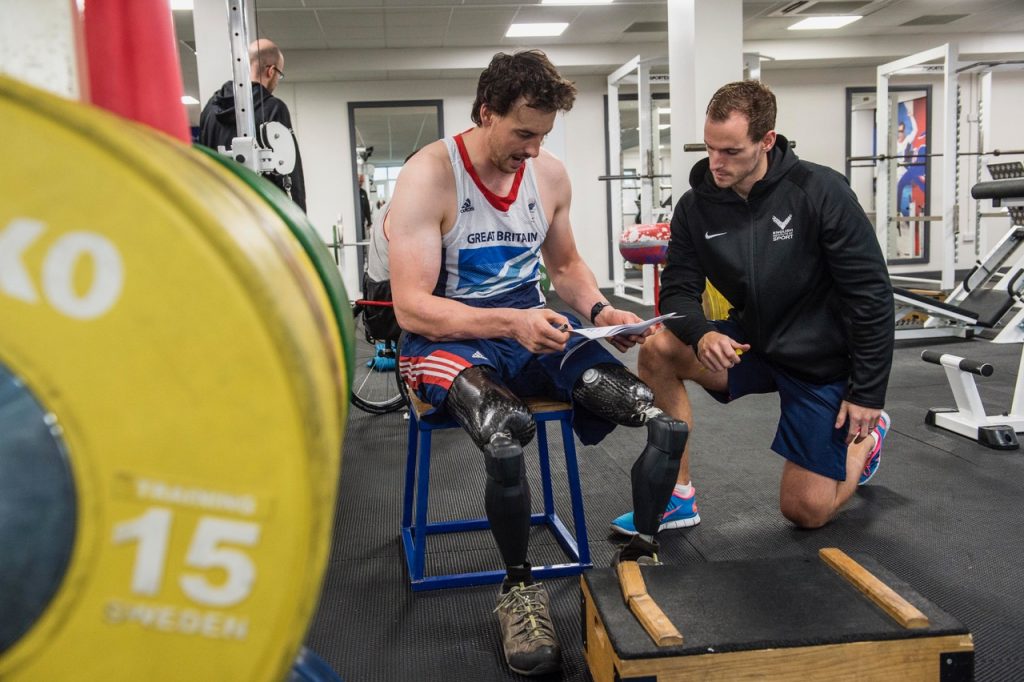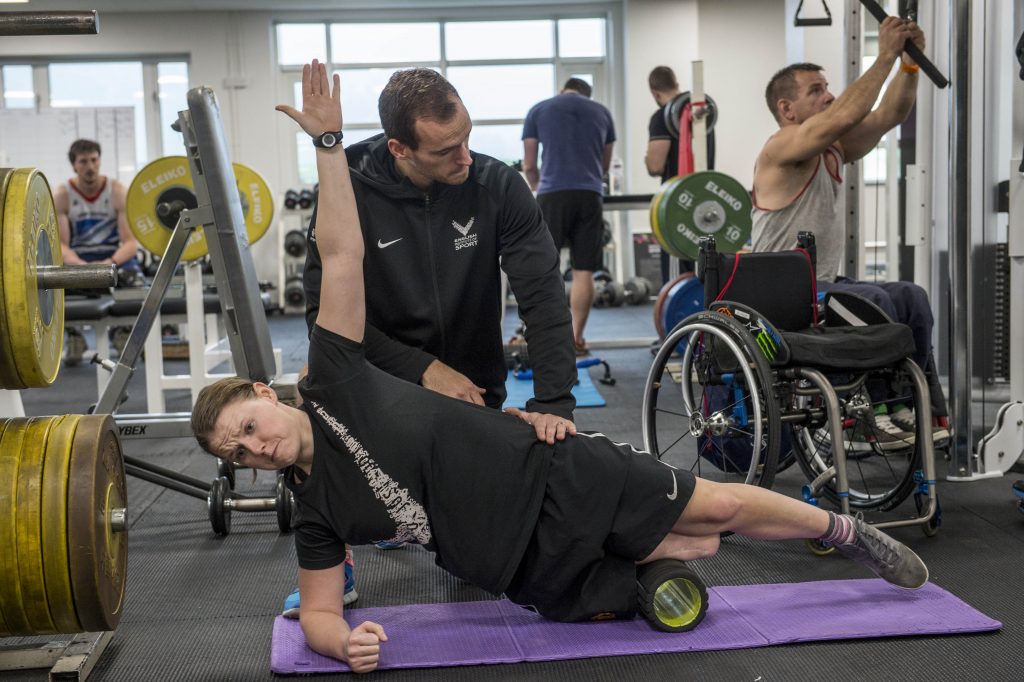The career journey and observations of physiotherapist Paul Martin
Along with many other sport science disciplines, being a physiotherapist can be a demanding job with unusual hours, multiple requirements to fulfil and various demands to deal with on a daily basis.
Paul Martin, a qualified physiotherapist and now the English Institute of Sport’s (EIS) Technical Lead for Paralympic Sport tells us about his early days in the discipline, how he got to where he is now and what an average day entails.
Tell us about your role with the EIS.
“I’ve been at the EIS for over 13 years. I have moved away from the hands-on side over the years and my job now as Technical Lead for Paralympic Sport is more of an overseeing role and focuses on developing practitioners.”
How did you first start out?
“I graduated in 1997 in Physiotherapy from Brunel University and then went on to work for a couple of years for the NHS. I then did an MSc in 2002 and was always interested in working with athletes. I started working with the disability swim team back in 2003 for a year before I started working with the EIS. Within my EIS multisport role in the early days I was working with all sorts of athletes, I was even working with water skiers at one point.”
What does your average day entail?
“It’s very varied which is great because Monday’s are normally admin and phone calls and catching up with people. Wednesday’s I’m usually out on sites such as Bisham Abbey or up north and I work another full day with EIS on Thursday’s.
“Recently we had a really big study day where we had a lot of practitioners from para sport come together from inside the EIS and externally. We had a lot of practitioners from different sports who have a great deal of knowledge in impairments and disabilities.
“Therefore, a lot of my time at the moment is being dedicated to sifting through all the feedback from that. A lot of planning goes into those sorts of days and so I’m following that up.
“If I’m with a practitioner it’s about going through some of the challenges they’re facing with athletes and the injuries they’re dealing with and their return to play strategies. We could also go through the squads and analyse any problems and injury data which we can pick up from Performance Data Management System (PDMS). Once we get an overview of the problems, we try to help the practitioner navigate their way through it and help them to deal with the relationships they have with the coaches and other practitioners and help develop the group dynamic. It’s a massively varied role and the best thing is that there is no standard day.”

Photo : Andy Weekes
07836 566295
www.andyweekes.net
How much has your role changed as your career has progressed?
“My average day has changed massively. From times when you are constantly back to back with athletes one after the other to now where my responsibilities are much more about practitioner support. My role now requires me to be interested in what the practitioners are doing around the network, giving them opportunities to learn and help them develop as much as they can.
“Things have changed a lot in physiotherapy over the years. As an institute, we are always looking for good physios who we can develop and there are a lot of opportunities in place to help practitioners develop their skills over the course of a cycle.”
How has para-sport and people’s perspective of it changed over the years?
“One of the things we wanted to do after London 2012 from a para sport perspective was make sure all practitioners were talking the same language. There were lots of people working in different sports with athletes with different impairments and we were often seeing similar things but not necessarily talking the same language. The first thing I wanted to do was put on impairment specific days so practitioners had a better understanding of the big things we are dealing with on a day to day basis, what we can work on and what we can and can’t have an impact on. Initially we met twice per year and had regular conference calls. We still put on two study days per year but there is a little less time for the conference calls!

Photo : Andy Weekes
07836 566295
www.andyweekes.net
“We are getting to the point where from a para point of view, lots of practitioners are now coming in with a real interest in Paralympic sport. Aside from practitioners with an interest in it, there used to be two types of people coming into Paralympic sport; practitioners that saw it as a route into other sport or those that had been around sport for a while and wanted a new challenge. For some of these practitioners it was a case of helping them fall in love with Parasport, which once you’ve been immersed in it is hard to resist. Now we are seeing more people who have a genuine interest in working in Paralympic sport coming into the EIS so we now have a very strong team with a real passion for it.
“Part of the reason I believe this is happening is the fact that the sport is much more easily visible to people with the TV coverage of the Paralympics and the recent Para-Athletics World Championships. That’s never going to do any harm. There is a much greater understanding of what para athletes do and the level of dedication and work they put in and there is a recognition that their achievements are no different from able-bodied athletes.
“Paralympic sport is a movement. For some it is seen as a project group or an area of special interest but some of the sports like Boccia have no Olympic or able-body sport equivalent and are starting to get that level of recognition in their own right.
“Paralympic sport is something that stands on its own and the people who are involved in it, like me, love it.”
Read more about Physiotherapy at the English Institute of Sport.